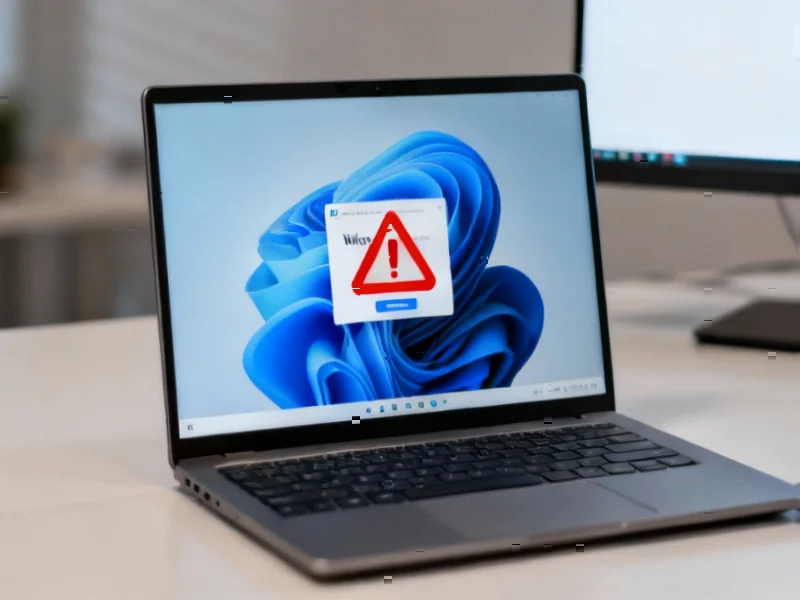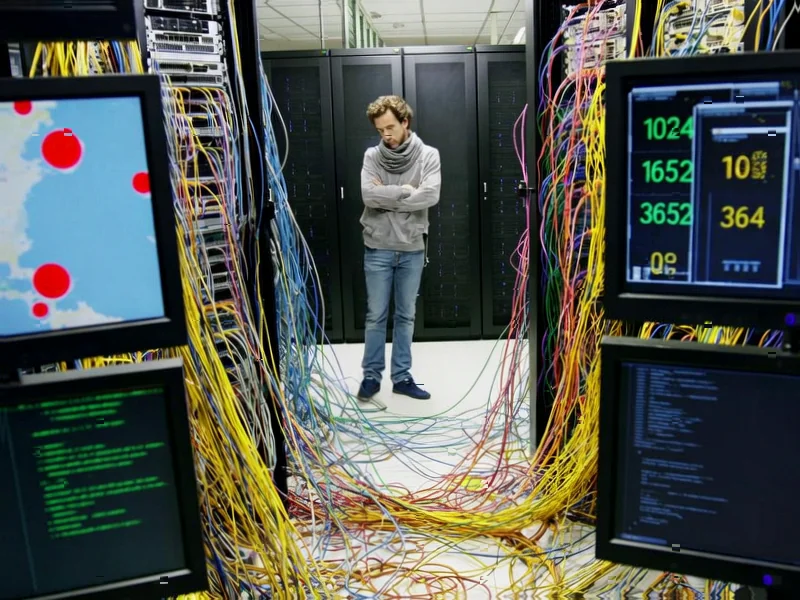According to PCWorld, YouTube creator CyberCPU Tech has had two Windows installation guides removed by YouTube’s automated systems for violating the platform’s “harmful or dangerous content policy.” The first video demonstrated bypassing Windows 11’s Microsoft account requirement, while the second covered installing Windows 11 25H2 on unsupported hardware. The five-year-old channel with 300,000 subscribers received strikes that could lead to permanent termination if it accumulates three within 90 days, with the creator’s appeals being denied within minutes. CyberCPU Tech now suspects Microsoft involvement despite no direct evidence, noting that similar content removal has affected other creators covering Windows topics. This situation highlights growing tensions between platform policies and technical education content.
Table of Contents
Microsoft’s Strategic Push for Connected Accounts
Microsoft’s aggressive push for mandatory Microsoft accounts in Windows 11 represents a fundamental shift in their business model that goes beyond user convenience. While features like OneDrive synchronization and cross-device settings provide legitimate benefits, the mandatory account requirement serves as a data collection gateway that feeds Microsoft’s advertising ecosystem and user profiling capabilities. This isn’t merely about preventing piracy—it’s about controlling the user experience to maximize data acquisition and ecosystem lock-in. The company has been gradually closing loopholes that allowed local account creation, making tutorials like CyberCPU Tech’s increasingly valuable for users seeking privacy or simplicity in their personal computer setup.
YouTube’s Automated Moderation Crisis
This incident exposes the fundamental flaws in YouTube’s content moderation infrastructure, where automated systems lack the contextual understanding to distinguish between legitimate technical education and genuinely harmful content. The platform’s “Harmful or dangerous content policy” was designed to combat actual threats like instructional theft, hacking tutorials, and payment system bypasses—not standard operating system installation guidance that has been commonplace for decades. The rapid denial of appeals suggests either algorithmic overreach or human reviewers working with inadequate guidelines. This creates a chilling effect where creators must self-censor technical content for fear of arbitrary enforcement, ultimately diminishing the platform’s educational value.
The Fragility of Creator Ecosystems
With 300,000 subscribers, CyberCPU Tech represents the vulnerable middle class of YouTube creators who depend on the platform for their livelihood while having limited recourse against arbitrary enforcement. The channel’s two-year probation period until January 2026 demonstrates how a single controversial topic can jeopardize years of content creation and community building. This power imbalance forces creators into impossible positions: they must either avoid covering certain technical subjects entirely or risk their entire channel based on unpredictable moderation decisions. The lack of transparency about what specifically violated policies leaves creators navigating an opaque system where they cannot reasonably avoid future infractions.
The Reality of Platform Alternatives
CyberCPU Tech’s exploration of alternative platforms reveals the stark reality facing technical creators seeking to diversify beyond YouTube. Platforms like Rumble, while offering more lenient content policies, have proven economically unviable for non-political creators, with the channel reporting earning only 43 cents after two years and hundreds of videos. Even specialized platforms like Floatplane struggle to match YouTube’s discoverability and monetization potential. This creates a captive market situation where creators must tolerate YouTube’s increasingly restrictive policies because viable alternatives simply don’t exist at scale for technical educational content.
Broader Industry Implications
This situation reflects a larger trend where platform policies increasingly favor corporate interests over user education and technical transparency. If Microsoft were directly influencing content removal, it would represent a dangerous precedent of hardware and software manufacturers controlling educational discourse about their products. More broadly, it highlights how automated content moderation systems can be weaponized—intentionally or not—to suppress information that contradicts corporate business objectives. As Microsoft and other tech giants deepen their integration with content platforms, the line between legitimate policy enforcement and corporate censorship becomes increasingly blurred.
The Future of Technical Content Creation
The ongoing tension between platform policies and technical education will likely drive innovation in content distribution models. We may see increased adoption of decentralized platforms, subscription-based technical sites, or peer-to-peer content sharing that bypasses traditional moderation entirely. However, these alternatives face significant challenges in matching YouTube’s infrastructure, audience reach, and monetization capabilities. In the immediate future, creators will likely develop coded language and indirect teaching methods to avoid automated detection—a digital cat-and-mouse game that ultimately serves neither creators nor users seeking straightforward technical guidance for their Microsoft Windows systems.



